How do you get a loaf of bread? You have three options:
- You buy the various ingredients and bake the bread from a recipe.
- You use a ready-to-use packet mix and bake the bread.
- You go to a bakery and buy a ready-made loaf of bread.
The right e-commerce shop system forms the initial basis for every web shop. There are many providers on the market. But which shop systems are the most popular? What are the current trends and which platform is the best one for your e-commerce business? In this blog article, we’ll show you what Saferpay plugins there are, how you can integrate them and what options to bear in mind when you are choosing a shop system.
How do you get a loaf of bread? You have three options:
E-commerce shop systems work in the same way:
The market trend for e-commerce shop systems is clearly steering towards the second and third variants. Large merchants are now making use of the ready-to-use modules and even ready-to-use shop systems. Thus, 1000 of the largest online shops in Germany are using 60% recognisable shop systems, led by Magento, Shopware and Salesforce Commerce Cloud. SAP Commerce Cloud (previously Hypris) is also recording an increase, as shown in the German study “E-Commerce Markt Deutschland 2020” carried out by the EHI Retail Institute and Statista. In the 250 largest online shops in Austria, Magento is also the most-used shop system, followed closely by Salesforce and SAP. According to the EHI/Statista study “E-Commerce Markt Österreich 2020” (German), a good 50% of the largest shops use unrecognisable shop systems. In Switzerland only around 20% of the largest online shops use systems they have developed in-house – here too, ready-to-go shop systems make up the majority of systems used. Magento is particularly popular, followed by SAP, Shopware, WooCommerce, PrestaShop and Peppershop (“Welches Onlineshop-System verwenden Sie?“, statista.de, only German).
If you look at the entire market of shop systems worldwide, the top players are as follows:
Source: SimilarTech.com TECHNOLOGIES MARKET SHARE ECommerce Platforms.
We also cover all these shop systems with our online payment system Saferpay.
Furthermore, there are wide-spread content management systems (see CMS systems with * in the graphic below) offering e-commerce functions, such as Squarespace and Weebly (both mainly in the USA), and Wix. ERP systems also have integrated e-commerce modules; Odoo, in particular, is becoming increasingly well-known throughout Europe.
In Europe, ePages shop technology is also very widespread (it is actually number 2 in Germany) and is used by various partners.
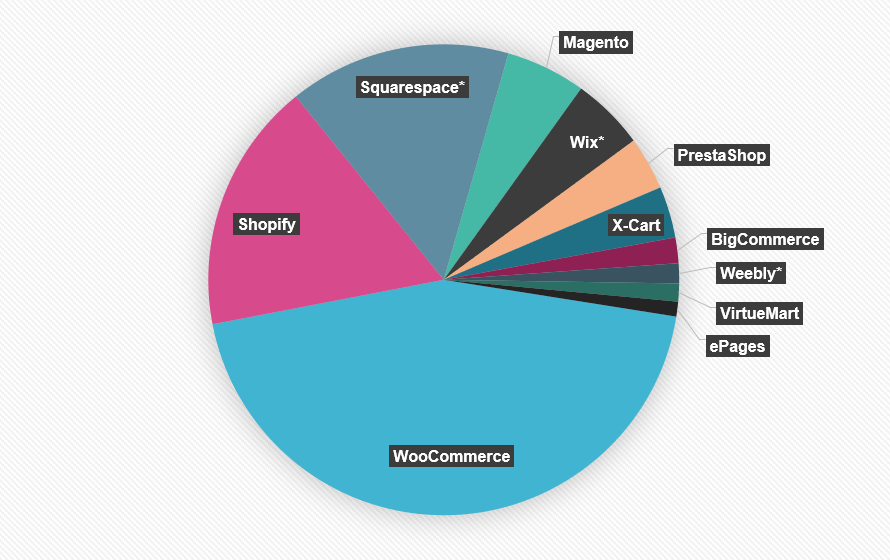
Top Ecommerce Platforms entire Internet, source: SimilarTech
At a global level, the share of largest e-commerce merchants is distributed differently, particularly in Europe where Salesforce and SAP play a big role.
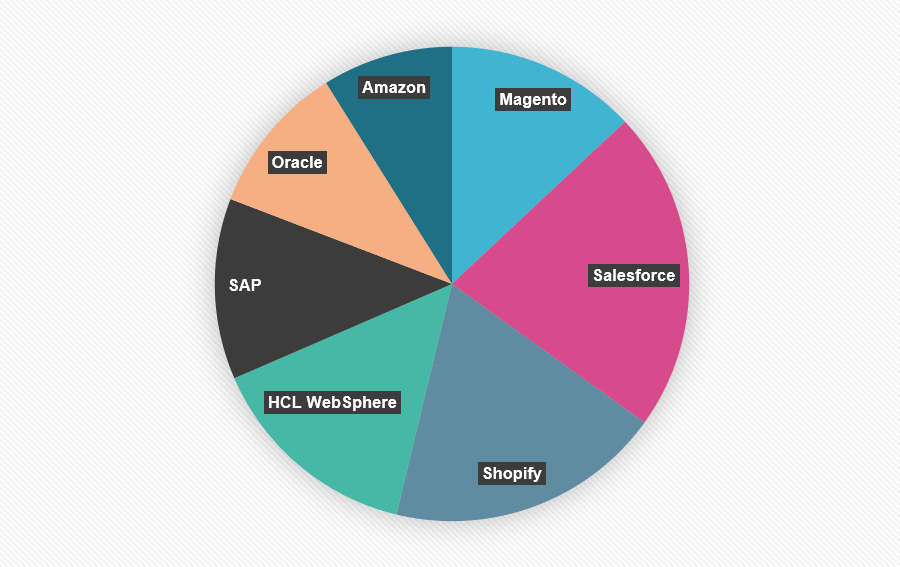
Top Ecommerce Platforms, Top 10k Sites, source: SimilarTech
Almost all these systems use plugins, often also called extensions, apps, modules or cartridges, in order to extend functions and communicate with other systems. These extensions are either integrated “natively” (pre-installed) or as in most cases installed directly into the backend of the shop system.
We also offer these important plugins for Saferpay. The official Saferpay plugins are developed and maintained by Worldline together with certified shop system experts. This guarantees quality and user-friendliness.
All these plugins support the most standard and latest payments methods, including credit and debit cards as well as online payment methods such as Klarna Payments, Alipay, PayPal or Apple Pay. They are, of course, PSD2- (strong customer authentication with 3-D Secure 2) and PCI DSS-compliant.
We make our Saferpay standard plugins available to you free of charge.

Download a plugin (from various platforms), install and activate it simply via the menu item Plugins in the Wordpress backend.
Transmit Saferpay configuration data from the Saferpay Backoffice (test or live account) into WooCommerce:
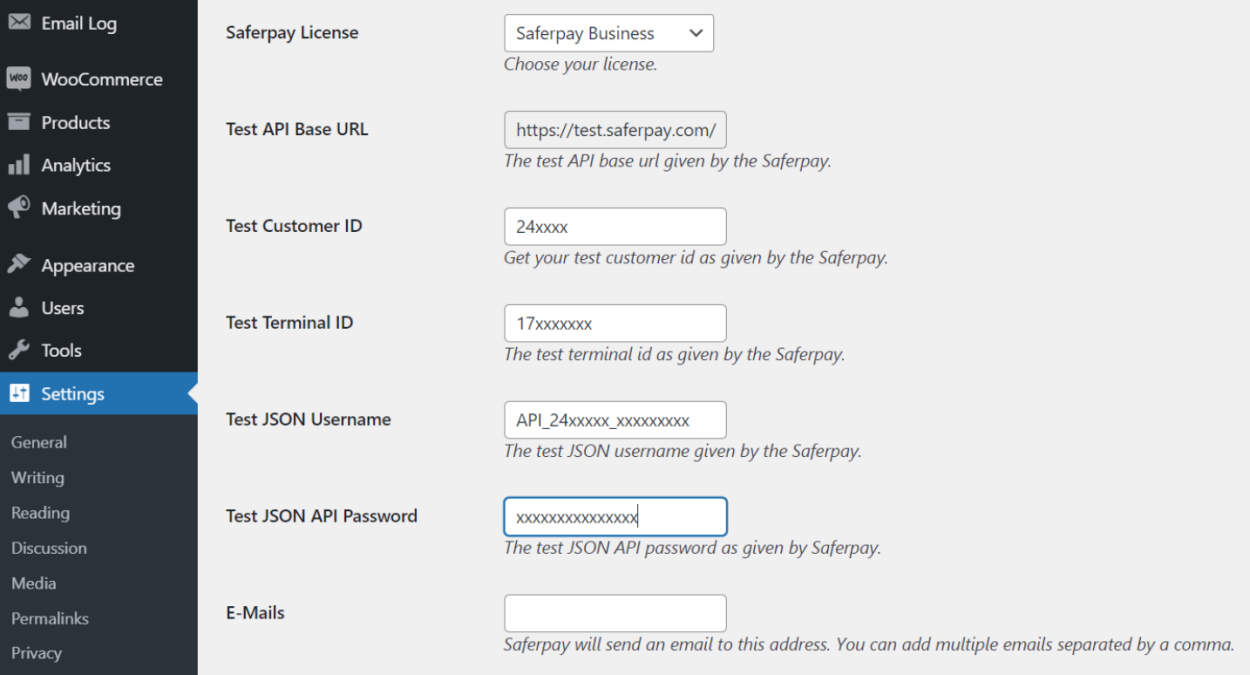
Activate the payment methods (which are also activated in Saferpay and for which there is a payment contract, e.g. from Worldline, Klarna or PayPal):
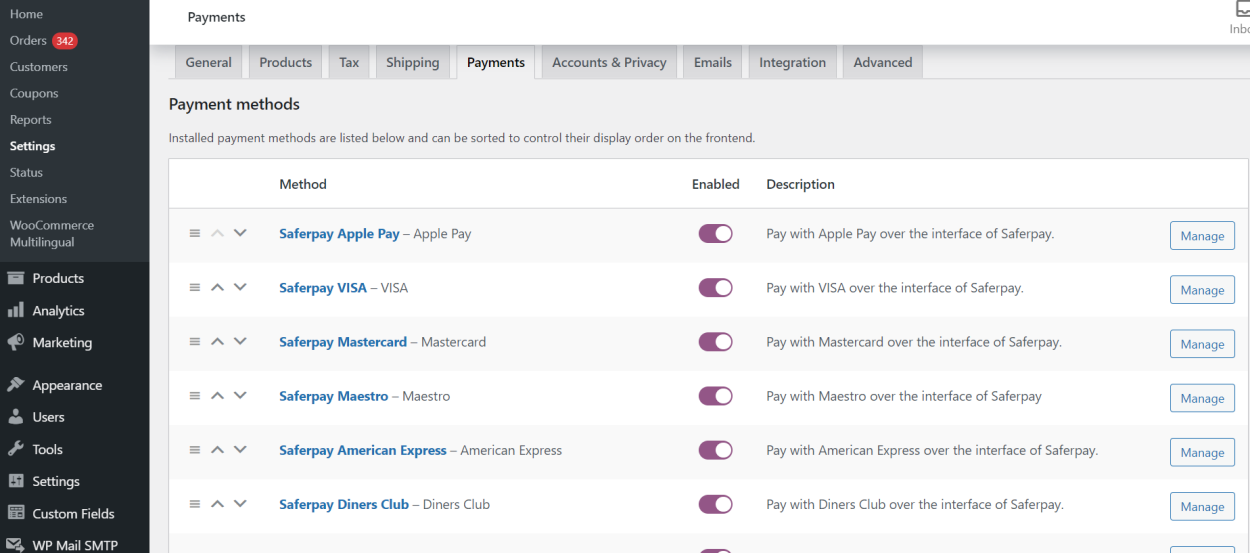
Configure the parameters of your payment methods, such as countries and currencies, manual or immediate bookings (pre-authorisation vs. autocapture):
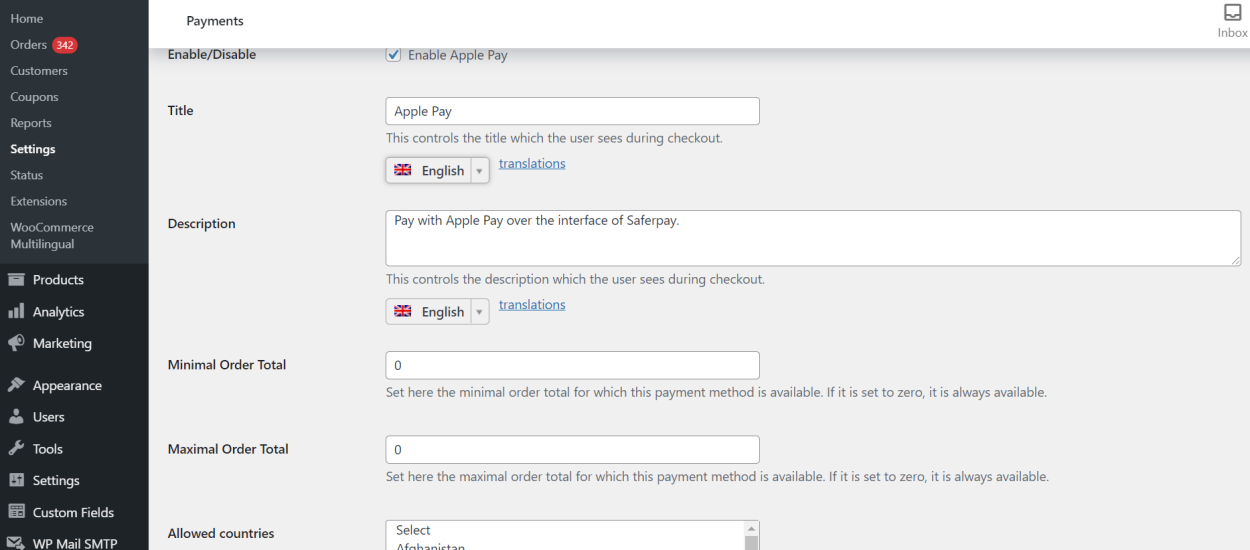
Carry out any other potential adaptations to the design (CSS adaptations) – ready!
You can find detailed information about the features, downloads and detailed descriptions on our Saferpay plugin page.
There are free Saferpay test accounts at https://test.saferpay.com
Our Saferpay plugins are continually being updated and extended. In the coming months, we plan to introduce and make available the following functionalities, payment methods and procedures:
We rely on your feedback to further develop Saferpay and to align it even better to your requirements as a merchant, developer and end user. We know how valuable your time is, so we really appreciate it when you give us feedback. Whether you want to share an idea, a problem or a small success story with us, we look forward to hearing from you!
Send feedback Opens in a new tab